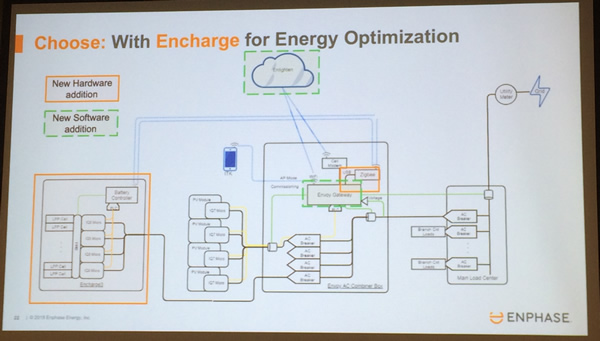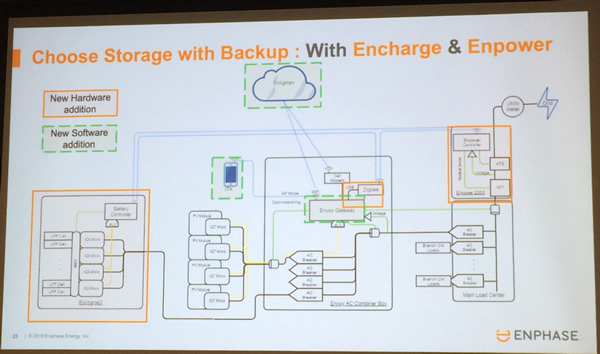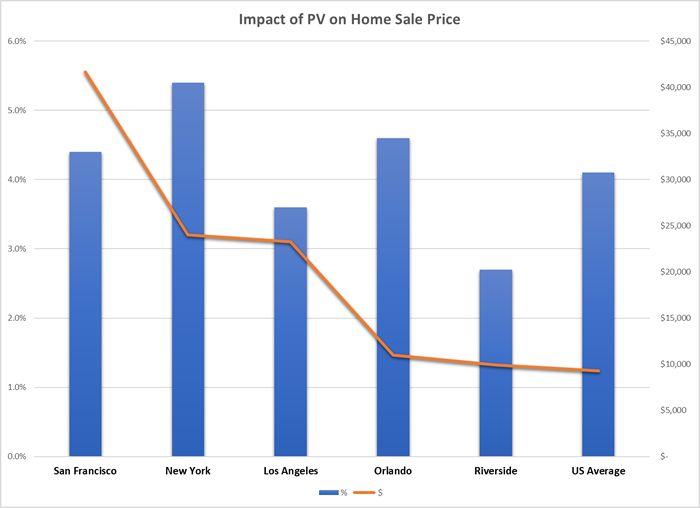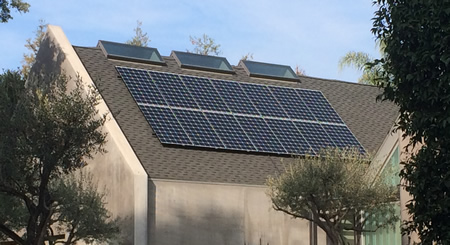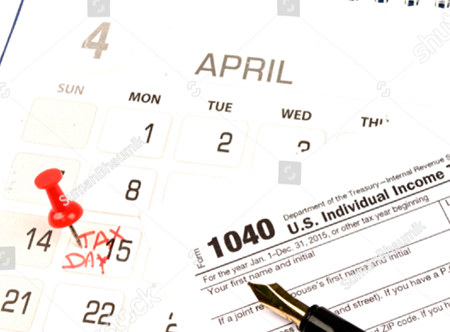Welcome to the
Run on Sun Monthly Newsletter

In this Issue: |
April, 2019
Volume: 10 Issue: 4
Enphase IQ8 Update...The end of March found me in San Diego attending the annual NABCEP Continuing Education Conference. As part of being NABCEP certified, I am required to recertify every three years, and my third recertification occurs this year. The Conference is a convenient way to earn the credit hours needed as part of the recertification process. While much of that is bone dry (such as a full day talking about the most recent changes to the National Electrical Code, made tolerable only by the wit of the presenter, Ryan Mayfield), or surprisingly cool (such as our discovery of Scanifly), nothing was more anticipated than our chance to attend a talk presented by Enphase titled, "Design and Specification of Grid-Agnostic Enphase Ensemble™ based Systems." (Enphase describes the Ensemble system as being "grid-agnostic" because it is intended to switch seamlessly between grid connected and grid isolated operation.) Here is our take... The room for this talk, as was the case with a number of talks, was way too small for the number of interested participants. I arrived early and was rewarded with a seat. Late arrivals were SRO. The talk was presented by Peter Lum, with an assist from Field Applications Engineer, Nathan Charles. Key TakeawaysFor folks looking for just the highlights, here are some (in no particular order):
A Little More DepthSo those are some highlights, let's talk about some details. The smarts inside the IQ8 is an Application Specific Integrated Circuit (ASIC) with some 5 million gates. As a result, the IQ8 is able to update its control vectors every 20 ns. Thus, the individual IQ8 provides the primary control over the microgrid, and there is no master/slave relationship. However, the IQ6 and IQ7 do not have that level of independent control functionality, and so they rely on secondary control, via the Envoy, to stay in sync with the microgrid. As with its other IQ cousins, the IQ8 is a bi-directional inverter, meaning the same device that can be in an array, converting DC to AC, can be in the battery, converting AC to DC to charge the cells. Keying off the 2017 NEC (which California will adopt come January), we were introduced to a new acronym: MID - which stands for Microgrid Interconnect Device, and is defined as, "A device that allows a microgrid system to separate from and reconnect to a primary power source." (705.2) The Enphase MID is referred to as Enpower, and it essentially has three components: an automatic transfer switch, a neutral forming transformer (recall that the IQ series just uses the two hots, L1 and L2, so the NFT is necessary to power 120 volt loads when off grid), and a control device. Comms are - you guessed it - Zigbee. Use CasesThere are two primary use cases for the new Encharge component, Energy Optimization, and Storage with Backup. Let's look at each one in turn. Energy OptimizationEnergy optimization, or more to the point, Time-of-Use arbitrage, involves storing energy during the peak production portion of the day (instead of exporting it to the grid) and using it later in the day for local consumption. This becomes important as utilities - think SCE - switch to TOU rates where energy in the middle of the day is significantly cheaper than energy during the peak TOU period (more and more, something like 4-9 p.m.). Our friends over at Energy Toolbase just blogged about, "A Historic Moment for Residential Energy Storage Economics: California’s new Time-of-Use Rates," noting that for the first time it was possible to model a more economically advantageous system adding storage, than just solar alone. Which means that the Energy Optimization use case may pencil out on its own - though that is hard to say for sure until we have some actual pricing! Enphase provided the following illustration (sorry for the lousy images, taken from the side with my phone!). You can click on the image to see a larger version.
On the far left is the Encharge 3.3 kWh storage system showing the four IQ8's. To the right is an array built on an equal number of IQ7 microinverters - but note well, this is not a microgrid configuration. Why? Because it doesn't have a MID, and per the 2017 NEC, you can't have a grid-agnostic microgrid without a MID. In the middle is the latest version of the IQ combiner box. (We just installed one of these and frankly, I'm not a big fan. The wiring for consumption CTs requires you to cross reference an unmarked connection block to the lid for the wiring diagram. This is going to be error prone, IMHO. Also the Envoy has been reduced to just a circuit board w/out its own case. Ok, it's in a NEMA 4 box so the case is probably not needed, but if you are trying to operate it with the deadfront off (say during testing), you need to watch where you put your fingers! A false economy here, I'd say.) Note the green boxes which denote updated software both in the cloud and in the Envoy. Also, the Envoy picks up a Zigbee device (to communicate with Encharge) to be attached to one of the two USB ports on the Envoy. (As we noted before, Zigbee is built into Encharge, though not called out on this slide. This is super easy to set up as the Encharge just lands on one of the breakers in the IQ combiner. And while it may - assuming our friends at ET are correct - pencil out, it isn't what all the buzz has been about, so let's turn to that use case, shall we? Storage with BackupEver since I made my pilgrimage to Petaluma last summer, the amazing microgrid has been the feature that everyone is eager to see. The good news is, we are closer! The bad news is, this isn't going to be as easy as we had hoped. So here is the key diagram from last week:
There is really only one change from the prior diagram and that is in the upper right hand corner, where the Enphase MID - dubbed the Enpower 200G, has been added. The switch is rated at 200 A (that is the significance of the 200, G stands for grid), and in theory could be an all home setup. In a grid outage, the Enpower ATF switches and the microgrid forms - automagically. Depending on the actual array and storage configuration deployed, will determine how much of the house loads could actually be powered here. There is one fly in the ointment in this illustration. In many parts of the country, the utility meter is mounted outdoors and the distribution panel - the Main Load Center in the slide - is located indoors. In such a scenario, the Enpower MID could be wired in between those two components with minimal disruption or cost. Alas, in California, at least in Southern California, that is not how we do things. 99.9% of the services that I have ever looked at consisted of a combination meter and load center "all-in-one". The rub here is that there is no easy way to physically interconnect the Enpower device between the meter and the load center. When pressed on that issue, Enphase - accurately, if not helpfully - pointed out that we would have the same problem with any such storage solution and the combo meter/load centers. True enough, but we have been talking about this product for a long time now, and you would like to think that they would have a clean solution in mind as to how to make this work by now.
Of course, another approach is to have a critical loads subpanel, with a breaker on the main panel and the Enpower in between. That, I suspect, will be the approach most commonly taken. So there you have it -- all that I could absorb from our relatively short session, and some follow-on conversations with Peter over the next couple of days. (My thanks to him for his patience in dealing with my myriad questions.) |
“Initial rollout of the IQ8 in the U.S. will be as part of the Encharge energy storage system
Encharge will come in two basic flavors, a 3.3 kWh, 1.28 kW unit, and a 10 kWh, 3.8 kW - both with a peak surge output of 150% rated power for one second
The 3.3 kWh unit will be 24" high, 13" wide, and 12" deep, weighing 88 lbs, mountable either on the floor or the wall, and it can be mounted outdoors…”
Get your copy of
Commercial Solar:
Step-by-Step
from
Run on Sun
Founder & CEO
Jim Jenal

Now available on Amazon.com
in both
Print & Kindle versions.
Commercial Solar:
Step-by-Step
from Run on Sun
Founder & CEO
Jim Jenal

Now available on Amazon.com
in both Print & Kindle versions.
Help Us Spread the News!


Zillow Report: Solar Boosts Home Prices by 4.1%The folks over at Zillow are out with a study of sale prices for homes with a solar PV system compared to those without and the results are pretty dramatic. Nationwide, homes with a solar PV system sold on average for 4.1% more than those without. Let's take a look at their numbers and see what that might mean for a solar installation in the Run on Sun service area... Let's start with the data (always a good place to start!)...
The graph plots the increase in home price as both a percentage (the blue bars) and total dollars (the gold line). New York city has the highest percentage increase (5.4%), while San Francisco, because of its sky high home values, has the highest dollar increase, a whopping $41,658! Doing the math, the Zillow study is showing an average home cost in Los Angeles of roughly $647,000. Here in Pasadena, the average home price is a good deal higher, which would mean that the increase in the home's value by adding solar will almost certainly cover the cost (and then some) of even a very large solar power system. To be sure, it helps if the system is installed in a way that also makes the home look better (see above), so you will want to avoid Shortcut Solar for your install! If you are looking to make an investment in your home that will benefit you both now, and when you go to sell, forget the designer kitchen - go solar! |
Update on the Federal Tax Credit for Residential Solar
In particular, here is the schedule of declines to the federal tax credit for solar:
So over the next two years a relatively gentle step down (though 4% on a $25,000 project is still $1,000 you would be leaving on the table) each year, but then it falls off a cliff as the credit goes away entirely! Moreover, it is important to note that the credit is only available for projects that are "put in service" in the associated calendar year; which for all intents and purposes for residential projects, that means that you have received Permission to Operate from your utility. And that is where the real issues arise. We have seen this before—whenever a major incentive is scheduled to decrease (or go away entirely), there is a last-minute rush to get projects installed and PTO issued. But utilities operate on their own timelines, and as the number of projects pending increases, so does the amount of time that it takes to get approved. For potential Run on Sun clients, you should know that we will be issuing a cutoff later in the year beyond which time we will not be able to guarantee that you receive PTO this year. That will be a function of both our pipeline, and more importantly, the pipeline for approval at the various AHJ's and utilities in our service area. Watch this space for updates. Bottom line—if you are seriously considering going solar this year, and capturing that full 30% federal tax credit, Do Not Wait! Give us a call, get into the queue early, and rest easy, knowing that next year, Tax Day will be a whole lot sweeter! |
